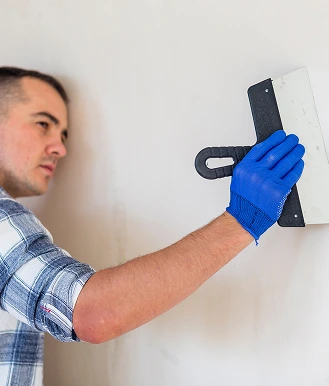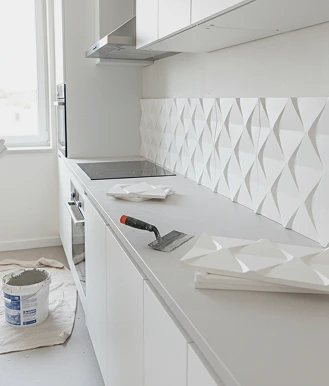How to combine materials of different thicknesses during renovation | solutions for US homes
Joining Materials of Different Thicknesses: Professional Solutions for Your Home
One of the most challenging aspects of any renovation is creating a clean, beautiful joint between different finishing materials. Whether transitioning from wallpaper to tile, joining decorative stone and paint, or connecting wall panels, this task requires precision and expertise. An improperly finished seam can ruin the look of your entire renovation.
Don't risk your home's appearance! Finding a pro who understands the nuances of proper joining is easy with the Fix Concierge Service app. We will find a trusted specialist who will complete the job flawlessly.
Solution 1: Create a Decorative Change in Plane
The most effective and reliable method is not to hide the thickness difference, but to feature it. Use drywall or other sheet material to create a defined transition between two zones. This design approach looks modern and intentional, concealing any imperfections.
Where to use: Dividing zones in a living room, creating a headboard feature, highlighting an accent wall.
Why it's better to trust a pro: Calculating and installing such a structure requires precise measurements and an understanding of structural loads. Our professionals will help design and install a framework that will look perfect.
Alternative Materials for a Perfect Joint
Beyond traditional solutions, modern materials can greatly simplify the joining process. For example, flexible stone veneer-a thin slice of natural stone-is easy to cut and adhere to any surface, adapting to irregularities. It can be used for a smooth transition between masonry and a painted wall. Another option is decorative plaster with a silk or velvet effect, which visually softens transitions and creates a luxurious look. When selecting materials, it's important to consider their compatibility and the specific conditions of the room. A Fix Concierge pro will help you choose the best solution for your budget and design project.
Secrets to Long-Lasting Results
For a joint that lasts for years, proper design must be paired with careful surface preparation. Ensure all materials are securely fastened and not prone to deformation. Use special sealants and grouts that resist moisture and dust to prevent water ingress and mold growth. Also, pay attention to the quality of adhesives and other consumables; cheaper alternatives can lead to peeling and joint failure.
Features of Joining in Different Rooms
The best joining method often depends on the room type. In bathrooms and kitchens with high humidity, use water-resistant materials and sealants. In living rooms and bedrooms, you can experiment with decorative elements and lighting. Transition strips and moldings are often used on floors to protect the edges of floor coverings from wear. Always consider the room's functionality and style when choosing a solution.
Solution 2: Bring Materials to the Same Level
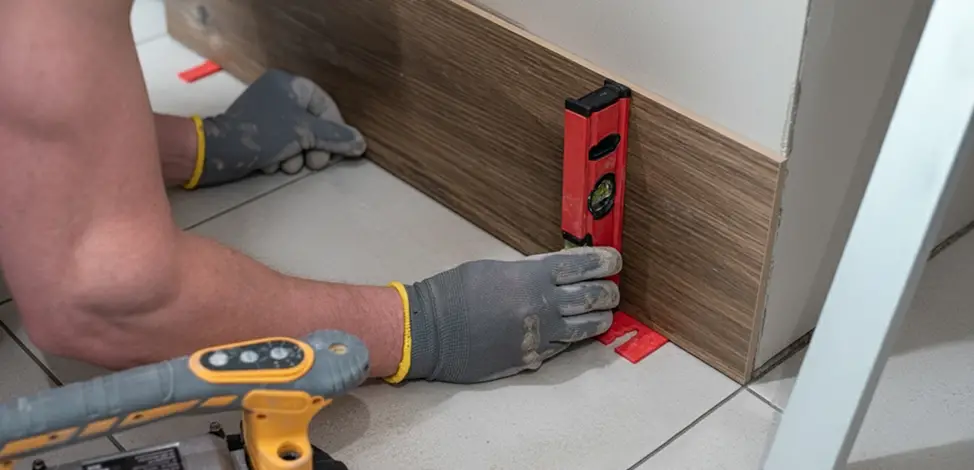
If your design calls for a perfectly flush wall but the materials have different thicknesses (e.g., textured tile and smooth wallpaper), the thinner material needs to be built out.
How it works: An additional layer of joint compound is applied under the wallpaper or paint, or a drywall underlayment is installed to bring the plane level with the thicker material.
Why it's tricky: Incorrect calculations can lead to cracked compound or a unstable structure. A Fix Concierge professional will determine the right method for your specific walls and materials.
Solution 3: Use Decorative Moldings and Trim
This is a classic and very reliable method. The joint is covered with a special decorative element-a molding, a border, or an aluminum transition profile.
Where to use: Ideal for joining tile and wallpaper in a kitchen or bathroom, or for separating paint and wall panels in a classic interior.
An important note: Choosing and installing trim correctly is an art. The pro will not only install it neatly but will also advise on which type of profile (flexible, rigid, with a cap) is best for your situation.
Solution 4: Conceal the Joint with Furniture or Lighting
Sometimes the best approach is to hide a challenging transition.
Furniture: The junction of different materials can be concealed behind a shelf, bookcase, or built-in cabinet. This is a logical and practical solution.
Lighting: Installing an LED strip along the joint line creates a stylish accent and draws attention away from the height difference.
Creative Solutions for Unusual Situations
Sometimes standard joining methods aren't enough. In these cases, non-standard solutions like custom moldings and trim come to the rescue. These decorative elements not hide irregularities but also add an elegant, finished look to the interior. For complex curves, flexible moldings that easily bend to the desired shape can be used. Another interesting technique is creating a reveal-a intentional gap between two materials that is filled with a decorative element or lighting.
Innovations in Joining Materials
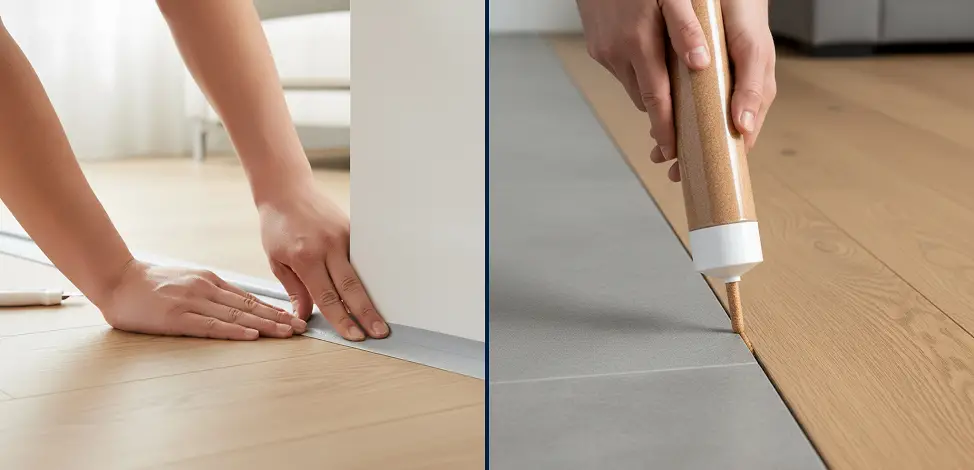
Manufacturers are constantly developing new materials and technologies for joining. One recent trend is self-adhesive tapes and profiles, allowing for quick and easy connection of different materials without glue or other fasteners. Another innovative product is liquid cork, an eco-friendly material with excellent sound and thermal insulation properties, ideal for filling seams and cracks or creating decorative effects.
Practical Expert Advice
Before starting work, carefully measure all surfaces and calculate the required amount of materials. Don't skimp on quality-choose reputable brands and suppliers. Pay attention to the expiration dates of adhesives and other consumables. When working with fragile materials, use specialized tools that won't damage the surface. Be patient-allow adhesives or sealants to dry completely before proceeding.
Is there a complicated joint in a corner or on the ceiling? This is twice as difficult. For example, the joint between textured plaster and smooth paint in a corner will always look uneven. An experienced pro will solve this by shifting the joint line onto the wall plane or by constructing a decorative corner bead. Don't attempt this yourself-the result may be disappointing.
Stop Guessing What's Best! Trust Your Renovation to Professionals
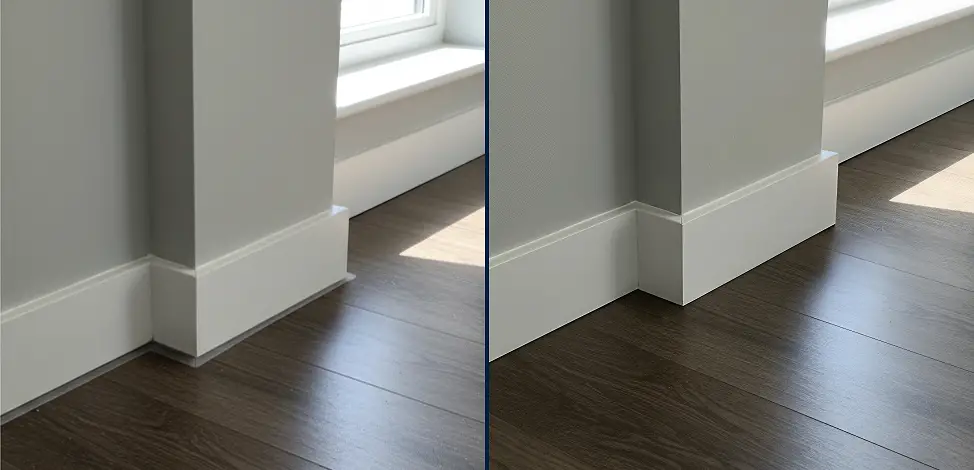
DIY joining of materials often leads to damaged materials, wasted time, and the need for re-dos. With the Fix Concierge Service app, you get:
- Access to vetted professionals who specialize in complex finish work.
- Free job assessment and a clear plan to solve your specific task.
- A quality guarantee and precise results without the hassle.
How It Works:
- Download the app for iPhone or Android.
- Describe your task (e.g., "Connecting tile and wallpaper in the kitchen") and upload a photo.
- Get matched with a designated pro, including their name and appointment time.
- Pay for the job in cash or via the app after you approve the work.
Save yourself the headache-let the experts handle the tough jobs! Complex material joining is a task for professionals. Don't waste time and money on experiments-contact Fix Concierge Service. We guarantee high-quality work, proven materials, and on-time completion. Our pros have extensive experience solving the most difficult challenges and are always ready to offer creative, effective solutions for your home. Renovate without stress or unnecessary costs-download the Fix Concierge app and get a free consultation today


